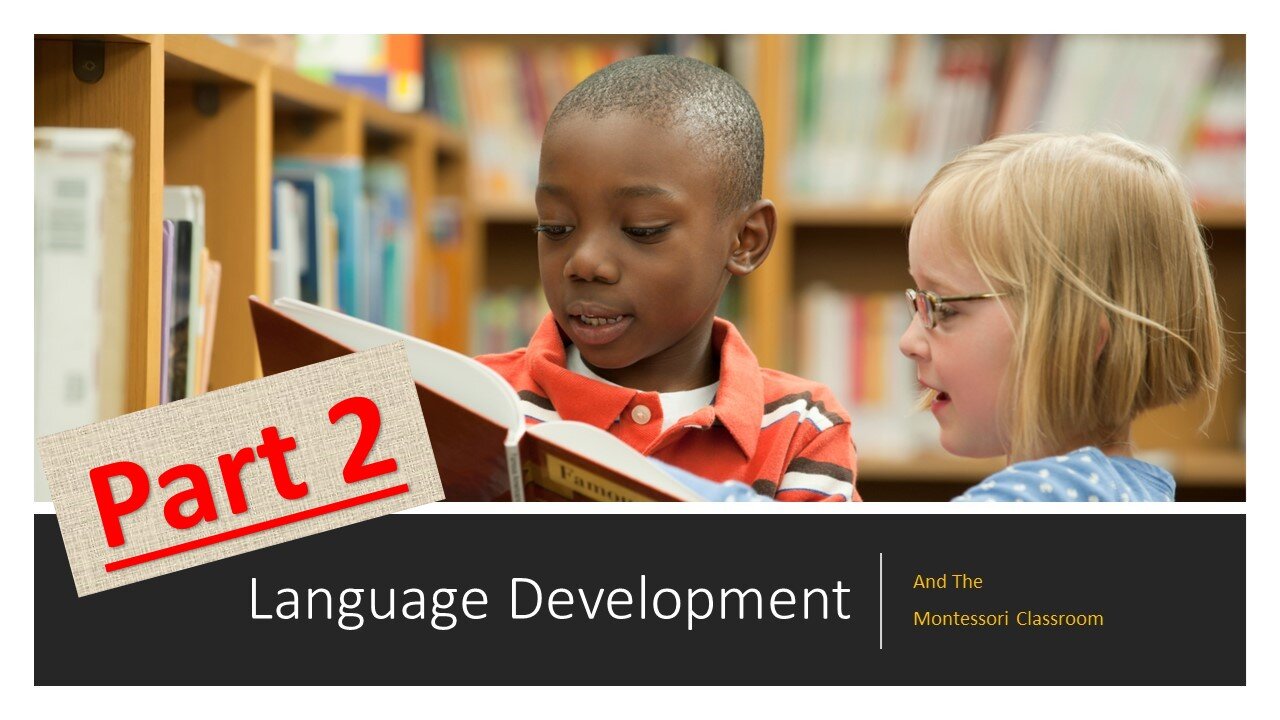Premium Only Content

The Development of Language Series (Part 2/4): The Research/Key Predictors for Reading Success
Timecodes:
0:00 Intro
2:30 Discovery
7:15 Key Predictors List
10:10 Phonological Awareness
12:05 Phonemic Awareness
14:02 Rapid Automatized Naming
18:00 Working Memory
23:16 Syllables
28:37 Encoding/Decoding
28:58 Interventions
Video Source (MontessoriGuide.Org):
https://vimeo.com/78757947
Website Sources:
http://dyslexiahelp.umich.edu/professionals/dyslexia-school/phonological-awareness
http://www.defeat-dyslexia.com/2016/04/a-quick-guide-to-dyslexia-and-working-memory/
https://dyslexiaida.org/working-memory-the-engine-for-learning/
https://ortongillinghamonlinetutor.com/rapid-automatized-naming-and-fluency/
https://ortongillinghamonlinetutor.com/the-big-five-teaching-syllable-types/
Montessori Sources:
Lillard, Paul Polk. (1972). Montessori a modern approach: the classic introduction to Montessori for parents and teachers. New York, NY: Schocken Books Inc.
Montessori, Maria. (Vol 1). (2007). The absorbent mind. Amsterdam, The Netherlands: Montessori-Pierson Publishing Company.
Montessori, Maria. (Vol 2). (2017). The discovery of the child. Amsterdam, The Netherlands: Montessori-Pierson Publishing Company
Standing, E.M. (1957) Maria Montessori: her life and work. New York, NY: Penguin Group.
Montessori Institute of San Diego
Academic Sources (paywall)
Bratsch-Hines, M., Vernon-Feagans, L., Pedonti, S., & Varghese, C. (2019). Differential effects of the targeted reading intervention for students with low phonological awareness and/or vocabulary. Learning Disability Quarterly, 43(4), 214–226. https://doi.org/10.1177/0731948719858683
Catts, H. W., McIlraith, A., Bridges, M. S., & Nielsen, D. C. (2016). Viewing a phonological deficit within a multifactorial model of dyslexia. Reading and Writing, 30(3), 613–629. https://doi.org/10.1007/s11145-016-9692-2
Crosby, S. A., Rasinski, T., Padak, N., & Yildirim, K. (2014). A 3-year study of a school-based parental involvement program in early literacy. The Journal of Educational Research, 108(2), 165–172. https://doi.org/10.1080/00220671.2013.867472
Infurna, C. J., & Montes, G. (2020). Two years vs. one: The relationship between dosage of programming and kindergarten readiness. International Electronic Journal of Elementary Education, 13(2), 255–261. https://doi.org/10.26822/iejee.2021.188
Oslund, E. L., Simmons, D. C., Hagan-Burke, S., Kwok, O. M., Simmons, L. E., Taylor, A. B., & Coyne, M. D. (2014). Can curriculum-embedded measures predict the later reading achievement of kindergarteners at risk of reading disability? Learning Disability Quarterly, 38(1), 3–14. https://doi.org/10.1177/0731948714524752
Segal, A., & Martin-Chang, S. (2018). The apple doesn’t fall from the tree: parents’ readingrelated knowledge and children’s reading outcomes. Reading and Writing, 31(5), 1231–1247. https://doi.org/10.1007/s11145-018-9837-6
Vellutino, F. R., Scanlon, D. M., Zhang, H., & Schatschneider, C. (2007). Using response to kindergarten and first grade intervention to identify children at-risk for long-term reading difficulties. Reading and Writing, 21(4), 437–480. https://doi.org/10.1007/s11145-007-9098-2
Zuk, J., Dunstan, J., Norton, E., Yu, X., Ozernov‐Palchik, O., Wang, Y., Hogan, T. P., Gabrieli, J. D. E., & Gaab, N. (2019). Multifactorial pathways facilitate resilience among kindergarteners at risk for dyslexia: A longitudinal behavioral and neuroimaging study. Developmental Science, 24(1). 1-18. https://doi.org/10.1111/desc.12983
Locals Community:
https://montessoriforeveryone.locals.com/
You can find my channel on YouTube AND Rumble
Email Me:
Base10Montessori@gmail.com
-
 0:47
0:47
Base Ten Montessori Education
2 months agoSnow. Lightning. Thunder. #PureMichigan Weather
21 -
![🔴[LIVE TRADING] Bounce or Bust?! || The MK Show](https://1a-1791.com/video/fwe2/ad/s8/1/c/n/q/f/cnqfy.0kob-small-The-MK-Show-Feb.-24th.jpg) LIVE
LIVE
Matt Kohrs
12 hours ago🔴[LIVE TRADING] Bounce or Bust?! || The MK Show
2,155 watching -
 37:11
37:11
BonginoReport
3 hours agoDan Bongino is Leaving (Ep.146) - 02/24/2025
83.6K140 -
 LIVE
LIVE
Wendy Bell Radio
4 hours agoThe MAGA Diet
12,420 watching -
 LIVE
LIVE
Graham Allen
1 hour agoGRAHAM MAKES YUGE ANNOUNCEMENT!! + LIBERAL REP ROOTING AGAINST AMERICA?!
7,087 watching -
![Massive Paradigm Shift: Bongino Hired At FBI; Joy Reid Fired At MSBNC [EP 4450-8AM]](https://1a-1791.com/video/fwe1/52/s8/1/u/2/_/e/u2_ey.0kob-small-Massive-Paradigm-Shift-Bong.jpg) LIVE
LIVE
The Pete Santilli Show
14 hours agoMassive Paradigm Shift: Bongino Hired At FBI; Joy Reid Fired At MSBNC [EP 4450-8AM]
3,996 watching -
 1:27:17
1:27:17
Game On!
13 hours ago $2.37 earnedAnother Monday without football...
22.5K7 -
 LIVE
LIVE
Jeff Ahern
1 hour agoMonday Madness with Jeff Ahern (Ding Dong the Witch is Gone!)
366 watching -
 34:56
34:56
Athlete & Artist Show
21 hours ago $1.61 earnedCANADA WINS GOLD AGAIN!!
14K2 -
 15:27
15:27
TSPLY
23 hours agoCNN Forgets President Trump Can Fire Anyone He Wants From The Pentagon
24K15